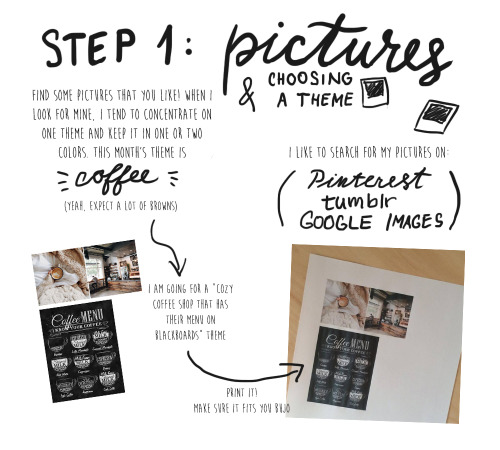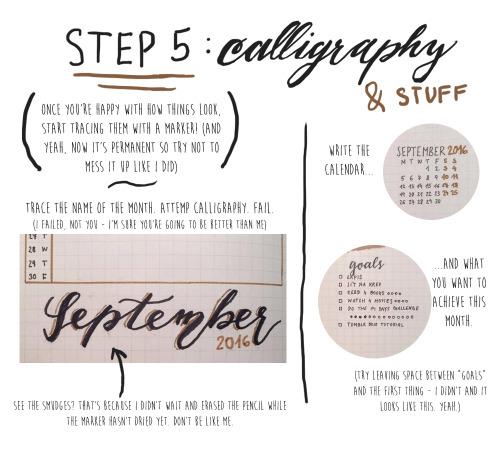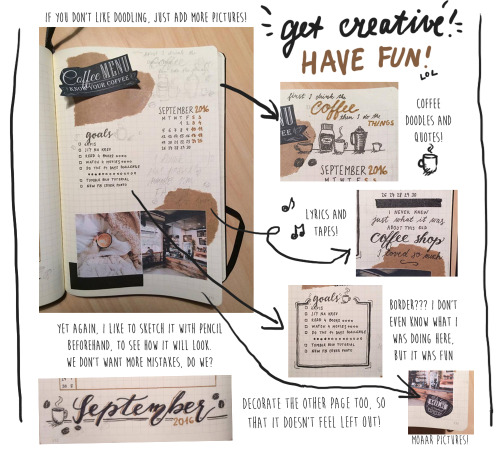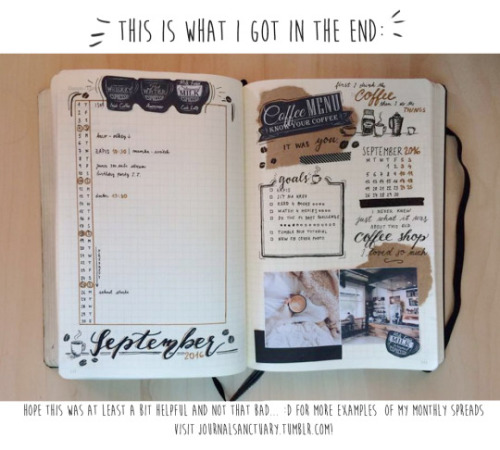Turns And Steps, Explained (2/2)
Turns and Steps, Explained (2/2)
Hey guys *cheerful wave* Wimbledon is over so my tennis obligation is done with and now I’ll resume my full-time figure skating follower status. I’ll kick things off with the second part of this turns and steps explanation. This post will touch on a couple of concepts we’ve discussed in the first part so you might want to check that one out before diving in: here it is.
The ISU technical handbook defines 6 types of steps: toe step, chassé, mohawk, choctaw, change of edge, and cross roll. Out of these 6, the only step that is considered difficult is the choctaw. Now if you recall from the previous post, the ISU also defines 6 types of turns (twizzle, bracket, loop, counter, rocker, three-turn). Among these 6, only the three-turn is considered basic, the other 5 are all counted as difficult. At this point I guess you’re naturally wondering why there is such an imbalance between turns and steps. Well, that is because a turn, by definition, must be done on one foot, while a step would normally involve two-footed skating, and that is something we don’t want to see too much of. In fact, the ratio of one-footed to two-footed movements is one of the most reliable indicators of a skater’s skating skills.
That said, let us check out what each of the 6 types of steps looks like. This time, to switch things up a bit, I’m going to use Seimei as illustration.
Keep reading
More Posts from Logophile101 and Others

每天都是提升自己的机会。
Everyday is a chance to improve yourself.
🌼🌻study smarter🌻🌼
(here are some study tips straight from my psych notes)
1. interest: the brain prioritizes by meaning, value, and relevance so u remember things better if ur interested
find a study partner
do extra practice or research
teach it to someone else (this works so well!)
2. intent: be actively paying attention. very little learning actually takes place without attention
use a concentration check sheet (every time u get distracted, put a check on ur sheet. this is supposed to program ur mind to pay attention)
while u read, talk back to the author
ask questions during lectures (this is scary ik!! but do it!)
3. basic background: make connections to what u already know
preview and skim the material before u read it. or google it!
write out a list of vocab words before a lecture and leave some spaces between them to fill in during the lecture
read ahead of lectures
watch crashcourse tbh
4. selectivity: start by studying whats important
look for bolded words, graphics, pictures, chapter review questions in ur readings
listen for verbal clues like emphasis and repetition during lectures
make urself a study guide as u read and write down questions for urself to answer later as review (kinda like cornell notes)
5. meaningful organization: u can learn/rmr better if u group ideas into diff categories
apply vocab words to ur life
make flashcards and sort them (try not to have more than seven items in one category!)
use mnemonics
6. recitation: saying ideas aloud in ur own words strengthens synaptic connections! when u say something aloud u r forcing urself to pay attention
after u read, ask urself questions
talk abt what u learned w/ classmates outside of class
again, teach someone else
7. visualization: ur brain’s quickest and longest-lasting response is to images
convert info into a chart or graph
draw it out
make a mental video of a process
look at picture/video examples
8. association: memory is increased when facts are consciously associated w something u already know. memory = making neural connections
ask urself: is this something i already know?
9. consolidation: give ur brain some time to establish a neural pathway
make a list of what u remember from class
review notes at the end of the day, every day
stop after reading each prg to write a question in ur notes
make ur own practice quiz
10. distributed practice: we all know cramming doesnt work but we do it anyway! but yeah short and frequent study sections work better
make a daily/weekly study schedule
create a time budget/time tracker (track everything ur doing for a week and see how u can be more efficient w/ the time u waste)
divide the reading/vocab by the number of days before an exam and do a little bit each day (u can use sticky notes to divide ur reading)
other tips:
stop stressing! this sounds stupid and it isnt going to be easy, but anxiety causes u to lose focus. try ur best to think positively. sleep a lot. minimize ur caffeine intake. take a walk maybe
when u need to remember something, look upward or close ur eyes (when ur eyes are open ur using visual parts of ur brain that u might not need to be using)
find a rival! (like the person right above u in class rank) secretly compete w/ them (envy can improve mental persistence bc it makes u focus more intensely) but dont overdo it!
walking and sleeping build memory storage in ur brain
eat flavonoids! (grapes, berries, tea leaves, cocoa beans make neurons in the brain more capable of forming new memories + increase blood flow to the brain)
obstacles force ur brain to try harder, so space learning lessons apart or create a puzzle to solve or change ur physical setting
Today I’d like to talk about something that I was taught as a student of music that I think could be relevant for language learners. It’s something a teacher told one of my teacher’s who in turn, passed the knowledge down to me.
It’s all about raising the ceiling and raising the floor.
So what do I mean by this?
Let’s imagine, for a moment, that your language ability is a room. The ceiling is the highest potential you’re capable of when the situation happens to be just right and everything is fresh in your mind. The floor, on the other hand, is the worst you may do if things don’t turn out the way you planned, let’s say, for example, the person you are speaking with has an accent you don’t understand or they don’t reply in the way you might have expected, or the environment you’re in is noisy and you have trouble hearing the other person clearly, leaving you at a loss.
When it comes to deciding just what you’ll study, you have two options. You can raise the ceiling or you can raise the floor.
Defining the Ceiling and the Floor in Language Learning
When you look at your language ability as having a ceiling and a floor, the ceiling height is determined by how well you can access the material you already know in a language (your active knowledge in the language) and the floor is determined by your total knowledge in a language (this includes things you know both actively and passively).
Active knowledge in a language is that which you are able to use when speaking or writing without any reference. It includes the words and grammar rules that you can actively recall. Your passive knowledge in a language, however, are the words and grammar rules that you’ll recognize upon hearing or seeing, but may not have come up with on your own when speaking or writing. If you’ve ever had an experience where you found yourself saying “oh yeah, that’s what that word is” or “that’s right, I forgot that’s how to conjugate that verb in that tense”, that’s your passive knowledge at work.
How to Raise the Ceiling
The ceiling, or your active knowledge in a language, is raised by reviewing and further instilling the material you’ve already learnt in your target language. I wrote a post last month covering how to work on the things you already know in a language, but I’d like to touch on it a bit more today. So how do you raise the ceiling?
Give the Material You’ve Learnt a New Context // If you’ve primarily worked with one or two sources to learn your target language, throw a completely different method into the mix. So let’s say, for example, that you’re learning Korean and that your focus has been on working through vocabulary on Anki, studying with Flashcards, and listening to audio lessons on KoreanClass101. For a quick change, try watching a free television show on Hulu or Drama Fever with the subtitles while taking notes on phrases you think will be useful or by jumping onto HelloTalk to chat with fellow Korean speakers. The more places you see vocabulary or grammar patterns pop up, the more likely you are to remember them. Giving your target language a new context can do a lot to help you retain some of what you’ve learnt elsewhere.
Speak Your Target Language // One of the best ways to maintain your knowledge of a language active is to speak it. The improvisation required as part of a conversation will not only help you keep your vocabulary active, but it might also do the double duty of raising both the ceiling and the floor (if the person you’re speaking with helps you out with any corrections). Don’t play your conversations safe, though! To really maximize this language learning tool, make a point of using new words or phrases appropriate to the conversation. It will help them transition over from your passive knowledge into your active knowledge.
Start Reading in Your Target Language // Another way to keep your target language fresh is by reading material in the language. There is a lot to choose from here – you can check out graded readers, translations into your target language, kids books, comics, articles, short stories and even books originally written in your target language. An important thing to keep in mind, especially if you’re not a huge fan of reading, is not to force yourself to read something you wouldn’t read in your native language. If you have no interest in biographies or the news, but you enjoy gossip columns and comics, steer clear of the former and indulge in the reading material you enjoy in your target language. The Language Reading Challenge I’m currently hosting is a great way to get started with this method!
Turn the Subtitles Off When Watching Film or TV // Even if you don’t understand everything that goes on in the film, you’ll find you pick up quite a bit more watching film and tv without subtitles. When we watch tv with the subtitles on, we tend to focus on what’s written and block out part of what we’re hearing.
Start Free-Writing in Your Target Language // One way you can help keep your vocabulary active is by free-writing in your target language. This can take the form of journaling, letters, short stories, poems, etc. It doesn’t really matter and no one else has to see what you write (unless you want them to, of course). Free-writing is a nicely balanced challenge – you have a bit more time to think about the words that you want to use than in a conversation, but you also don’t want to spend too much time thinking about which words you want to use because you’ll lose the flow of writing (and maybe even your train of thought).
Translation // This is another tool that you can use to raise both the ceiling and the floor because even if you can freely translate a good portion of the text, there’s a really significant chance that you’ll need to look a couple things up.
Listen to the Radio, Podcasts, or Songs in Your Target Language // If you need to reference a transcription or a translation of the audio, try listening to it alone at least once, first. After you take a look at the transcription or translation, listen to it again without reading along to see just how much your comprehension has increased. Finally, if you have the time and energy to do it a third time, you can listen while reading along.
How to Raise the Floor
Pickup a Coursebook in Your Target Language // But first, make sure it contains material that is above your level. There are a ton of fantastic coursebooks available in most languages and they often cover a wide range of vocabulary and grammar. The coursebook that I personally enjoy is Assimil.
Use Dual Language Readers // When you’re not quite ready to dive into reading material entirely in your target language, dual language readers can be a really great asset. I personally prefer side-by-side dual language readers because I cannot see the translation just below what I’m reading and I therefore try a little harder to figure it out on my own before jumping over to the next page for the translation, but you can use whatever you’re comfortable with.
Watch TV Shows or Movies in Your Target Language with Subtitles // I have picked up quite a few useful expressions watching film and tv in my target language, but I wouldn’t have been able to do it if I hadn’t been watching with the subtitles on. When I watch foreign films without subtitles, I’m so concentrated on catching the things I do understand that I often totally miss new material. Subtitles, however, give me that extra little bit of help that increases the odds I’ll pick up a few new things.
Take Notes // Whenever you’re working with a resource, whether it is a textbook, a course, a teacher, or a podcast, take notes. There are studies that have shown we retain information better when we write it out by hand, and I’ve found it to be true in my own experience.
Learn the Words to Your Favorite Songs and Then Find Out What They Mean // It’s one thing to look up the lyrics to your favorite songs in your target language, but it’s another to spend the time translating them. In addition to being a fun way to learn your target language (and improve your accent), song lyrics often tend to include creative and more colloquial language than sources like textbooks, so listening to popular music can be a fun way to pick up new words.
Spend Some Time with Flashcards // Flashcards are a great way to study new vocabulary and my personal favorite. A few years back I wasn’t a huge fan, but now that I use Memrise and Anki, studying flashcards has become a much more efficient part of my learning routine.
Do you need to raise the floor or the ceiling?
If you find yourself constantly tripping over things that you “should” remember or that “you know you know”, then it’s likely time for you to raise the ceiling. On the other hand, if you find that you have a pretty good recollection of the material you’ve worked on and you’re feeling you’ve hit a bit of a plateau, you might need to raise the floor.
In a perfect world, the floor and ceiling would meet. In reality, we’ll never really be able to actively remember every bit of information we’ve learnt. And that’s totally okay. As long as you have clear goals in mind and you’re taking the steps you need to in order to keep moving in the right direction, that’s really all that matters.
There will be days where we’re frustrated with our progress, but there will also be days where things go smoothly and it makes everything worth whatever frustration we may have felt.
An important thing I’d like to point out before I close out this article is that self-evaluation is an important step to figuring out how you’re going to go about your studies. Having the ability to look at what your doing and take note of whether it’s working for you or not is critical to your progress. If you find a certain study technique isn’t working for you, stop spending time on it and look for a way that works better for you. If you find other techniques are helping you make huge strides in your learning, see if there’s a way you can spend more time on them!
There are, of course, plenty more ways to either raise the floor or ceiling (or to do a little of both at the same time), so I’d love to hear about the ways that you improve your active and passive knowledge in your target languages! Leave me a note in the comments below!
The post How to Become a Better Performer in Your Target Language appeared first on Eurolinguiste.

你的过错应该成为你的动力,而不是借口。
Your mistakes should be your motivation; Not your excuses.

每一個故事都會結束,但是生活中,每一個故事的結束同時也是一個全新的開始。
Every story has an end, but in life, every ending is a new beginning.

有生命就有希望。 While there’s life, there’s hope.

真正的成功在于克服对不成功的恐惧。
True success is overcoming the fear of being unsuccessful.
慢速中文:星巴克在中国
vocab from this podcast episode
星巴克 xing1 ba1 ke4 Starbucks
作为「作為」zuo4 wei2 to act as
连锁店「連鎖店」lian2 suo3 dian4 chain store
偏远「偏遠」pian1 yuan3 remote, far from civilization
戏称「戲稱」xi4 cheng1 to jokingly call
抱怨 bao4 yuan4 to complain
否认「否認」fou3 ren4 to deny, to declare to be untrue
普及 pu3 ji2 popular, to spread extensively, widespread
融入 rong2 ru4 to blend into, to integrate, to assimilate
以往 yi3 wang3in the past, formerly
元素 yuan2 su4 element
装饰「裝飾」zhuang1 shi4 decorations
协调「協調」xie2 tiao2 to coordinate, to match (colors, etc.), harmonious
当地「當地」dang1 di4 local
独特「獨特」du2 te4 unique, distinct
纪念品「紀念品」ji4 nian4 pin3 souvenier











Hey! I am really late with this, but I though that some of you might like to see how I make my monthly spreads. I did this sort of “infographics” (??? am I even allowed to call this thing infographics??) and even though it looks like this, I had so much fun making it :D. I really don’t know whether this is helpful or not, I tried. In case you’d like to see more tutorials (and hopefully better ones) in the future, let me know please? And thanks if you read it till the end, it’s so long :D
(I totally ran out of space for pictures at the end lol)

两个注定在一起的人,没有长不可待的时间,没有遥不可及的距离,也没有能够分离他们的人。
When two people are meant for each other, no time is too long, no distance is too far, and no one can ever tear them apart.
-
 nuaoiu reblogged this · 3 weeks ago
nuaoiu reblogged this · 3 weeks ago -
 nuaoiu liked this · 3 weeks ago
nuaoiu liked this · 3 weeks ago -
 kiimnu liked this · 1 month ago
kiimnu liked this · 1 month ago -
 logophile101 reblogged this · 1 month ago
logophile101 reblogged this · 1 month ago -
 logophile101 liked this · 1 month ago
logophile101 liked this · 1 month ago -
 fsyuzuru liked this · 6 months ago
fsyuzuru liked this · 6 months ago -
 thewalterbeforethisone reblogged this · 8 months ago
thewalterbeforethisone reblogged this · 8 months ago -
 stubborn-pint-sized-asshole liked this · 11 months ago
stubborn-pint-sized-asshole liked this · 11 months ago -
 bluestation liked this · 1 year ago
bluestation liked this · 1 year ago -
 tablecloud liked this · 1 year ago
tablecloud liked this · 1 year ago -
 meemles liked this · 1 year ago
meemles liked this · 1 year ago -
 arthabiletemetier reblogged this · 1 year ago
arthabiletemetier reblogged this · 1 year ago -
 quiteamilke liked this · 1 year ago
quiteamilke liked this · 1 year ago -
 hex73c2fb liked this · 1 year ago
hex73c2fb liked this · 1 year ago -
 storiesmaketheworld liked this · 1 year ago
storiesmaketheworld liked this · 1 year ago -
 stephz12 liked this · 1 year ago
stephz12 liked this · 1 year ago -
 heyheyheyaa liked this · 1 year ago
heyheyheyaa liked this · 1 year ago -
 greyjedi101 liked this · 2 years ago
greyjedi101 liked this · 2 years ago -
 nanelim liked this · 2 years ago
nanelim liked this · 2 years ago -
 anacassie4 liked this · 2 years ago
anacassie4 liked this · 2 years ago -
 herenolonger liked this · 2 years ago
herenolonger liked this · 2 years ago -
 freya-t liked this · 2 years ago
freya-t liked this · 2 years ago -
 bluejaysandblackbats reblogged this · 3 years ago
bluejaysandblackbats reblogged this · 3 years ago -
 narakya reblogged this · 3 years ago
narakya reblogged this · 3 years ago -
 amoodandamess liked this · 3 years ago
amoodandamess liked this · 3 years ago -
 noxthelights liked this · 3 years ago
noxthelights liked this · 3 years ago -
 cvakviigmohns reblogged this · 3 years ago
cvakviigmohns reblogged this · 3 years ago -
 azizasposts liked this · 3 years ago
azizasposts liked this · 3 years ago -
 freegladelancer liked this · 3 years ago
freegladelancer liked this · 3 years ago -
 its-not-the-fall liked this · 3 years ago
its-not-the-fall liked this · 3 years ago -
 taokyaki liked this · 3 years ago
taokyaki liked this · 3 years ago -
 blue-medley liked this · 3 years ago
blue-medley liked this · 3 years ago -
 intyalote liked this · 3 years ago
intyalote liked this · 3 years ago -
 judehatescardan liked this · 3 years ago
judehatescardan liked this · 3 years ago -
 sakhraljinniofalarish-blog liked this · 3 years ago
sakhraljinniofalarish-blog liked this · 3 years ago -
 lalalalalalalalalalalala liked this · 3 years ago
lalalalalalalalalalalala liked this · 3 years ago -
 kzhas reblogged this · 3 years ago
kzhas reblogged this · 3 years ago -
 kzhas liked this · 3 years ago
kzhas liked this · 3 years ago -
 goldenoreosclub liked this · 3 years ago
goldenoreosclub liked this · 3 years ago -
 yukino-miyu liked this · 3 years ago
yukino-miyu liked this · 3 years ago -
 ohlucyblue liked this · 3 years ago
ohlucyblue liked this · 3 years ago -
 aitlu liked this · 3 years ago
aitlu liked this · 3 years ago -
 nureyevschild reblogged this · 4 years ago
nureyevschild reblogged this · 4 years ago